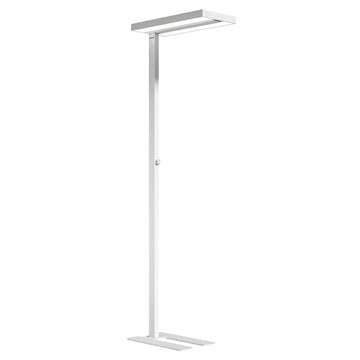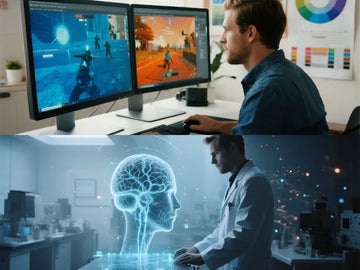Modern gaming has evolved far beyond simple entertainment into a sophisticated arena where milliseconds and mental clarity determine victory. While most gamers focus on hardware upgrades and skill development, an often-overlooked factor significantly impacts performance: lighting psychology. Understanding how light affects our brain's attention mechanisms and emotional states can provide the competitive edge that separates amateur players from gaming champions.
The Neuroscience of Light and Attention
The human brain's relationship with light operates on multiple levels, from basic visual processing to complex circadian rhythm regulation. Research has shown that environmental factors, such as light, significantly affect accuracy, speed, efficiency, and applicability of activities in the workplace, and these principles directly apply to gaming environments.
Our visual cortex processes approximately 10 million bits of information per second, yet only a fraction reaches conscious awareness. The key lies in how different lighting conditions influence our brain's ability to filter relevant information while suppressing distractions. Studies reveal that the lighting environment that most enhances attention combines 300 lux illumination with 6500K color temperature, creating optimal conditions for sustained focus.
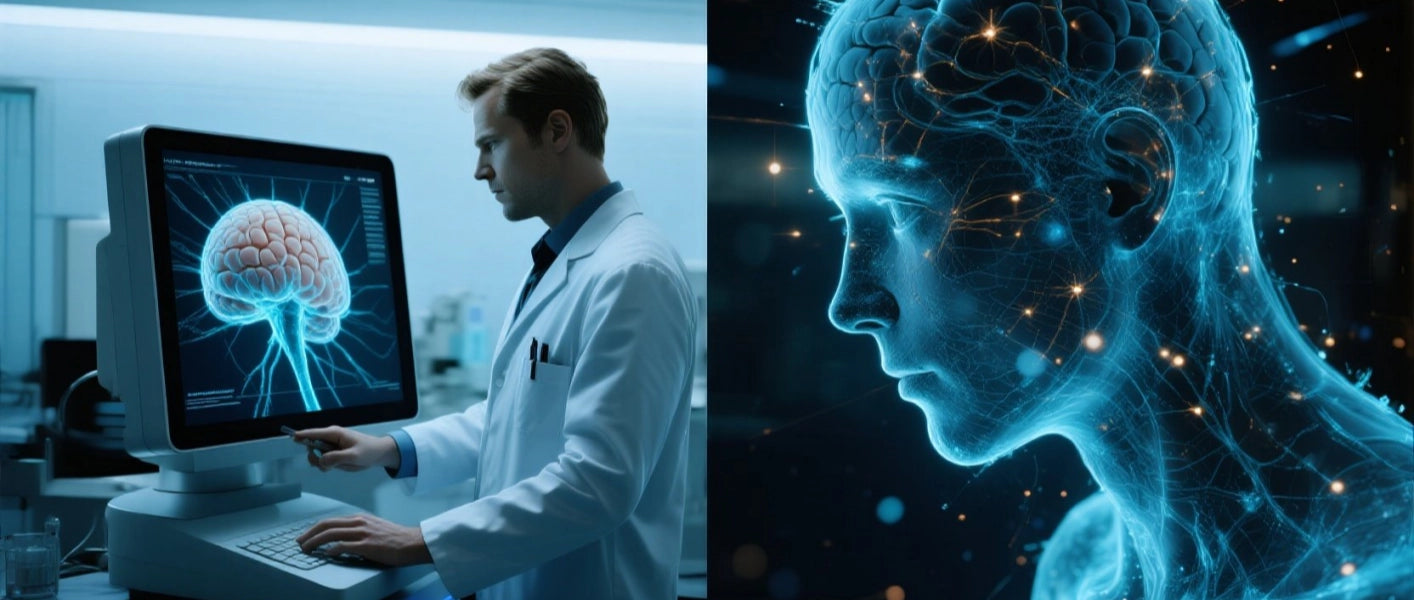
The prefrontal cortex, responsible for executive functions and decision-making, responds particularly well to specific lighting conditions. Cool white light (4000K-6500K) stimulates cortisol production and increases alertness, while warm light (2700K-3000K) promotes relaxation and reduces stress hormones. This physiological response explains why professional gamers often perform better under properly calibrated lighting systems.
Elite Gaming's High-Precision Light Requirements
Professional esports players require lighting environments that minimize eye strain while maximizing visual acuity.
High Color Rendering Index (CRI) lighting above 90 ensures accurate color perception, essential for distinguishing subtle visual cues in games. Many competitive titles rely on minute color differences to communicate game state information, weapon readiness, or environmental hazards. Standard LED strips or generic desk lamps typically offer CRI ratings between 70-80, insufficient for professional gaming requirements.
Gaming environments demand consistent, flicker-free illumination to prevent visual fatigue during extended sessions. Traditional fluorescent lighting can flicker at 120Hz, causing subliminal stress that accumulates over hours of gameplay. Modern LED systems with proper drivers eliminate this issue while providing stable color temperature throughout long gaming sessions.
The concept of "visual noise" becomes critical in competitive gaming. Harsh shadows, glare, and uneven lighting create distractions that fragment attention. Professional gaming setups require carefully positioned task lighting that eliminates these visual interruptions while maintaining optimal screen visibility.
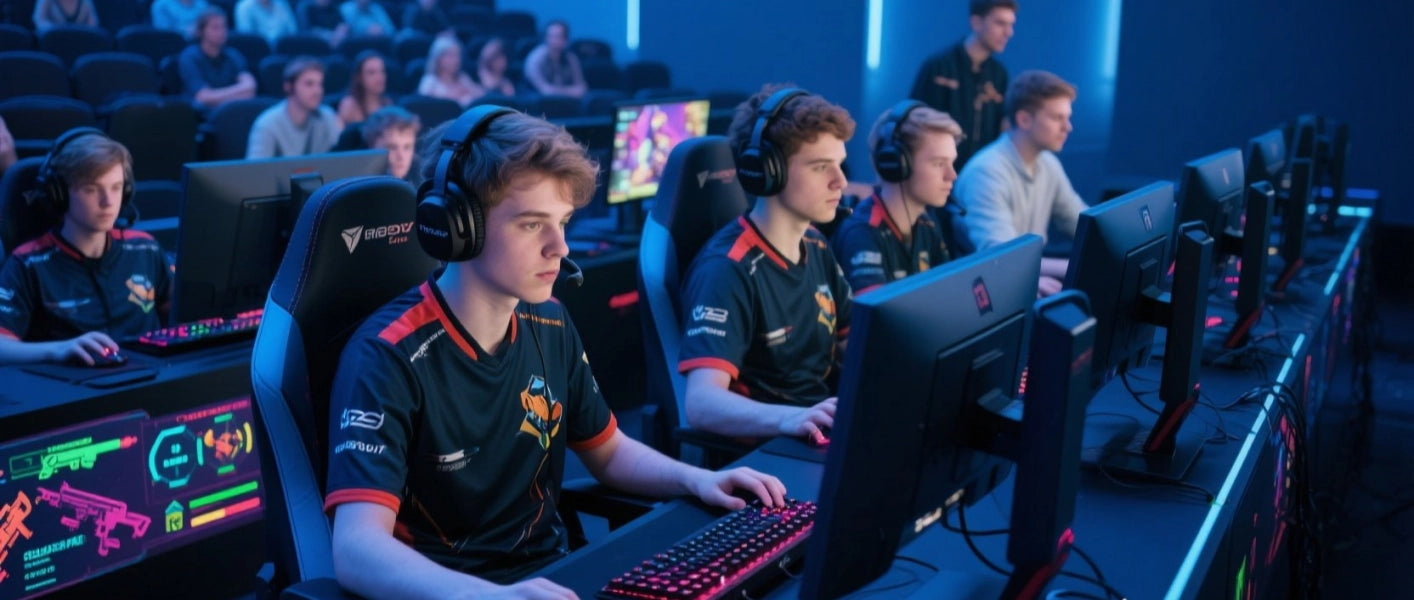
HJ1 Desktop Lamp: Precision Task Lighting for Gaming Excellence
The Honeywell HJ1 desktop lamp represents a breakthrough in gaming-specific task lighting design. Positioned above the monitor, this lamp provides focused illumination that reduces desktop clutter distractions while maintaining optimal visibility for gaming peripherals.
The HJ1's adjustable color temperature range (2700K-6500K) allows gamers to customize their lighting environment based on game type and session duration. For fast-paced competitive games requiring maximum alertness, the 6500K setting provides the cool, energizing light that enhances reaction times. Cooler color temperatures ranging from 4000K up to 10,000K are used in spaces and during times when it's appropriate to promote alertness and attention.
The lamp's directional design concentrates light where it's needed most while avoiding screen glare. Its 18-inch adjustment range ensures proper positioning for various monitor sizes, from standard 24-inch displays to ultrawide 34-inch gaming monitors. The focused beam pattern eliminates peripheral shadows that can cause eye strain during extended gaming sessions.
Advanced dimming capabilities allow precise brightness control from 10% to 100%, enabling users to match ambient lighting conditions without compromising screen visibility. This feature becomes particularly valuable during streaming sessions where consistent lighting affects video quality and viewer engagement.
The HJ1's minimalist design integrates seamlessly with modern gaming setups without creating visual distractions. Its stable base and low-profile construction ensure it won't interfere with monitor positioning or peripheral placement while providing reliable task lighting for years of intensive gaming use.
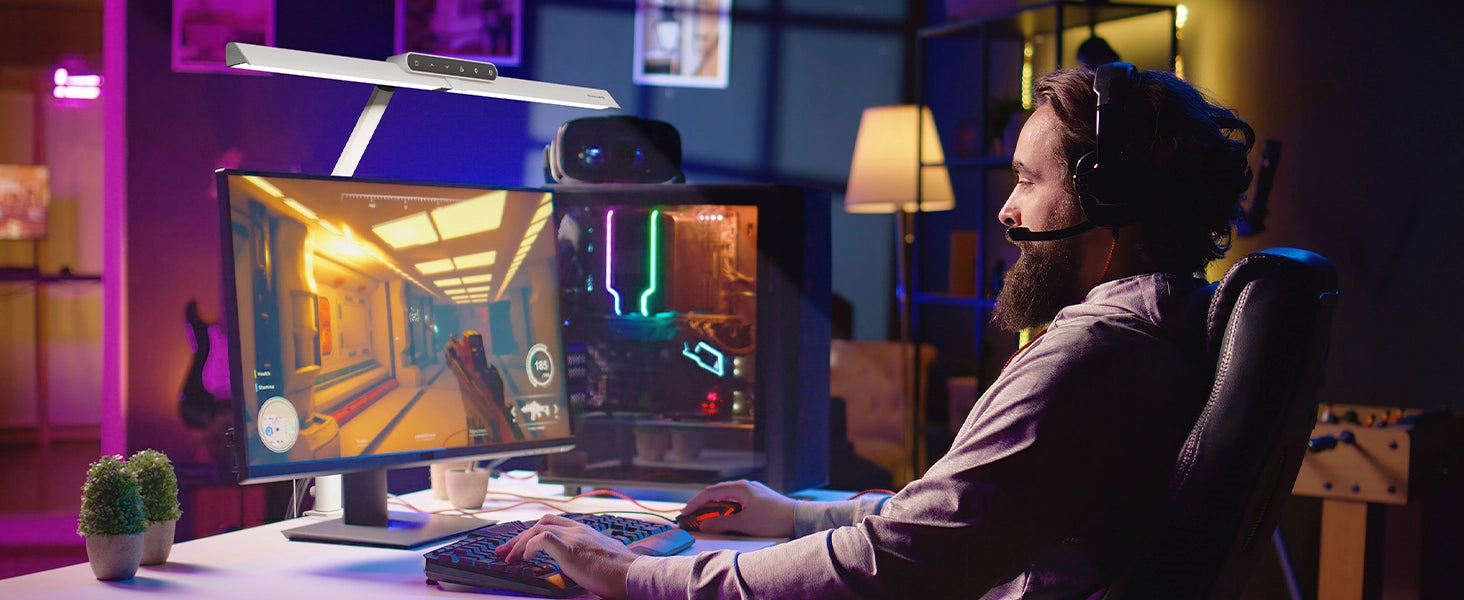
F2 Floor Lamp: Ambient Mood Enhancement for Gaming Spaces
The Honeywell F2 floor lamp serves as the cornerstone of comprehensive gaming lighting design, providing ambient illumination that complements task lighting while supporting mood regulation. Unlike harsh overhead lighting or inadequate desk lamps, the F2 creates a controlled environment that enhances both performance and comfort.
The F2's full-spectrum LED technology offers precise color temperature control, enabling users to create lighting environments that support different gaming activities. Light with a higher color temperature (cooler, bluer light) has been shown to have a stronger effect on our circadian rhythm than light with a lower color temperature, making the F2's adjustable range essential for maintaining optimal alertness during competitive sessions.
Standing 5.5 feet tall, the F2 provides room-filling illumination that eliminates the contrast between bright screens and dark surroundings. This balanced lighting reduces eye strain and maintains visual comfort during marathon gaming sessions. The lamp's diffused output creates soft, even illumination that complements monitor lighting without creating competing light sources.
The F2's smart control system allows users to program lighting schedules that align with their gaming routines. Morning training sessions can utilize cool, energizing light, while evening relaxation sessions benefit from warm, calming illumination. This programmable functionality supports natural circadian rhythms while maximizing performance potential.
For competitive gaming, the F2's ability to provide consistent, flicker-free illumination becomes crucial. The lamp's high-quality LED drivers ensure stable output that won't create subliminal distractions during critical gameplay moments. This reliability makes the F2 an essential component of professional gaming environments.

Optimized Gaming Lighting Configurations
Creating the perfect gaming environment requires understanding how different lighting configurations affect performance and comfort. Based on scientific research and professional gaming requirements, three distinct lighting modes provide optimal support for various gaming activities.
Training Mode: Maximum Focus Configuration
Training sessions require sustained concentration and minimal distractions. The recommended configuration combines the HJ1 at 5000K with 80% brightness, paired with the F2 at 4000K with 60% ambient lighting. This cool, energizing combination stimulates alertness while maintaining visual comfort.
The higher color temperature stimulates cortisol production, increasing alertness and reaction times. Blue-enriched or higher correlated color temperature white light has stronger effects on circadian rhythm, cognition, and sleep, making this configuration ideal for skill development and practice sessions.
Position the HJ1 to eliminate shadows on your keyboard and mouse pad while avoiding direct screen reflection. The F2 should provide even room illumination at approximately 200-300 lux, bright enough to maintain visual balance without creating glare.
Competition Mode: Peak Performance Lighting
Competitive gaming demands absolute focus and minimal visual distractions. Set the HJ1 to 5700K at 100% brightness for maximum alertness, while maintaining the F2 at 4000K with 40% intensity. This configuration maximizes cognitive performance while reducing environmental distractions.
The high-contrast lighting environment enhances visual acuity and reduces reaction times. Research indicates that optimal competition lighting should provide 400-500 lux at the task surface while maintaining 100-150 lux ambient illumination. This balance ensures maximum performance without causing eye strain.
Consider reducing blue light exposure 30 minutes before competition to prevent early fatigue.
Relaxation Mode: Recovery and Comfort
Post-gaming recovery requires lighting that supports natural wind-down processes. Configure the HJ1 at 3000K with 30% brightness, paired with the F2 at 2700K with 20% intensity. This warm, dim lighting promotes relaxation and supports healthy sleep patterns.
Dim yellow and orange colored lights have little impact on the circadian rhythm and are good options to use at night, making this configuration ideal for evening gaming sessions or post-competition recovery periods.
The warm light reduces cortisol levels and promotes melatonin production, supporting natural sleep cycles. This configuration becomes particularly important for gamers who frequently play late into the evening or participate in international competitions across time zones.
Advanced Lighting Psychology Applications
Understanding color psychology in gaming environments extends beyond basic brightness and color temperature. Different hues can influence mood, energy levels, and even perceived performance. Cool blues and whites enhance focus and alertness, while warm oranges and reds promote relaxation and creativity.
The concept of "lighting layers" becomes crucial in professional gaming environments. Task lighting (HJ1) provides focused illumination for specific activities, ambient lighting (F2) creates overall room atmosphere, and accent lighting can highlight specific areas or create mood effects. This layered approach allows precise control over the gaming environment's psychological impact.
Circadian rhythm management becomes particularly important for gamers who maintain irregular schedules. Artificial light sources with high color temperature were deemed to be the major pollution source, which could induce several adverse effects on human's health. Proper lighting management can help maintain healthy sleep patterns even with unconventional gaming schedules.
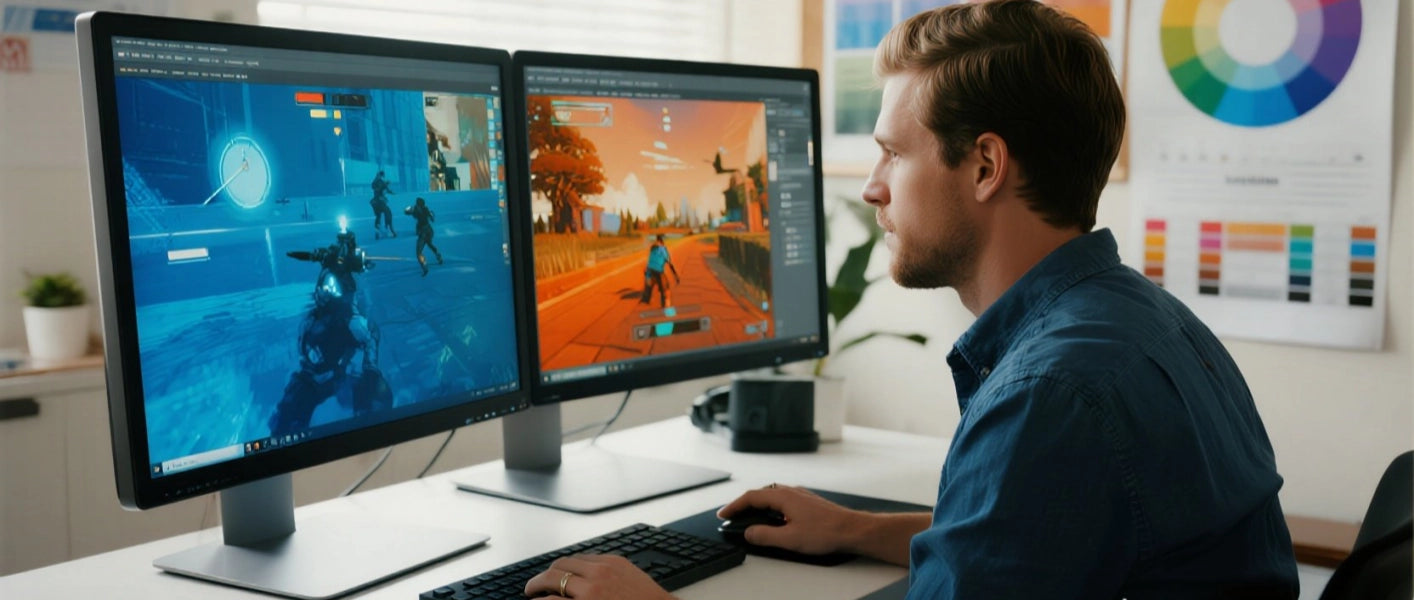
Conclusion: Lighting as a Competitive Advantage
The science of lighting psychology in gaming represents an untapped resource for competitive advantage. By understanding how different lighting conditions affect attention, mood, and performance, gamers can optimize their environment for peak performance while maintaining long-term health and comfort.
The combination of the Honeywell HJ1 desktop lamp and F2 floor lamp provides the foundation for professional-grade gaming lighting. These tools, when properly configured and utilized, can significantly impact gaming performance while supporting overall well-being.
As esports continues to evolve into a mainstream competitive arena, the importance of environmental optimization will only increase. Forward-thinking gamers who invest in proper lighting psychology today will maintain competitive advantages as the field becomes increasingly sophisticated.
The future of gaming lies not just in faster hardware or better skills, but in understanding how human psychology and physiology interact with technology. Lighting represents one of the most accessible and immediately impactful ways to enhance gaming performance while supporting long-term health and success.
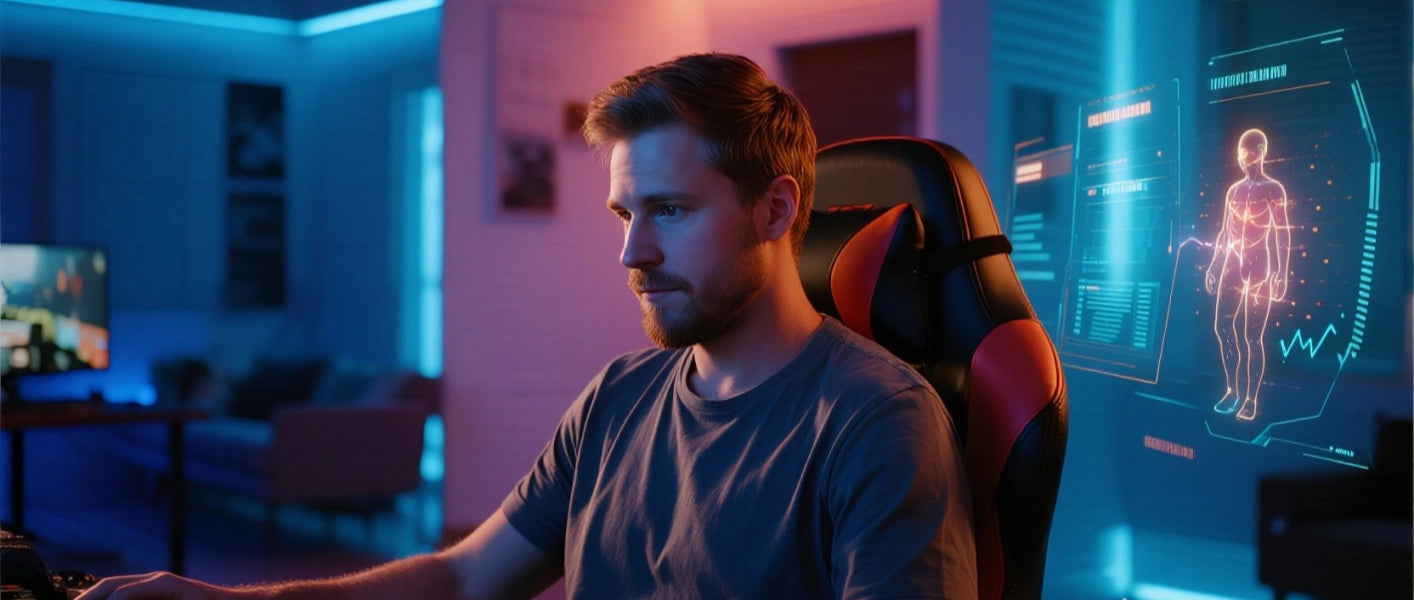
Remember that individual responses to lighting can vary. Experiment with different configurations to find your optimal gaming environment, and consider consulting with lighting professionals for complex setups or specific health concerns.

